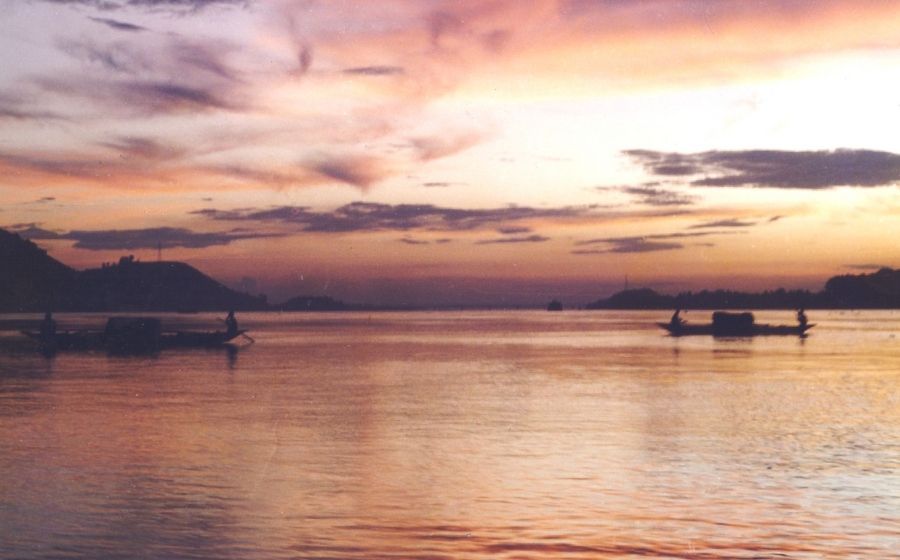
China to build ‘super’ dam on its part of Brahmaputra close to LAC

In a move that could have long-term impact on northeast India’s water security, China has said it will build a “super” dam on the lower reaches of the Yarlung Zangbo river, close to the Line of Actual Control, in Tibet.
The trans-border Yarlung Zangbo originates from the Tibet Autonomous Region (TAR) and flows into Arunachal Pradesh where it is called the Siang and then to Assam as the Brahmaputra before flowing into Bangladesh.
The state media report indicated that the dam could come up in the Medog county of TAR, which is close to Arunachal Pradesh. China has already built several smaller dams on the Yarlung Zangbo.
The new dam’s ability to generate hydropower could be three times that of central China’s Three Gorges Dam, which has the largest installed hydropower capacity in the world.
“China will build a hydropower project on the Yarlung Zangbo, one of the major waters in Asia that also passes through India and Bangladesh,” the state-run tabloid Global Times said in a report on Sunday (November 29).
“There is no parallel in history (of the project)… it will be a historic opportunity for the Chinese hydropower industry,” Yan Zhiyong, chairman of the Power Construction Corp of China, or Powerchina said at a conference last week.
The initial work on the dam began with Powerchina on October 16 signing a strategic cooperation agreement covering the 14th Five-Year Plan with the TAR government.
The news regarding the new dam was published on an official social media platform of the ruling Communist Party of China’s (CPC) Youth League last week.
Yan said the hydropower exploitation of the Yarlung Zangbo downstream is more than a hydropower project. “It is also meaningful for the environment, national security, living standards, energy and international cooperation.”
China will “implement hydropower exploitation in the downstream of the Yarlung Zangbo,” Yan said, adding that the plan put forward in the proposals for formulating the country’s 14th Five-Year Plan (2021-25) and its long-term goals through 2035 made by the CPC’s Central Committee.
According to Yan, the 60 million kWh (kilowatt hour) hydropower exploitation at the downstream of the Yarlung Zangbo river could provide 300 billion kWh of clean, renewable and zero-carbon electricity annually.
Also read: China establishes village within Bhutan territory, very close to Doklam
“The project will play a significant role in realizing China’s goal of reaching a carbon emissions peak before 2030 and carbon neutrality in 2060,” Yan said.
“Speculation about China planning to build a ‘super hydropower station’ in Medog county, where the Yarlung Zangbo Grand Canyon is located, have circulated for years. Medog, with a population of about 14,000, was China’s last county to be connected to the outside world with a highway,” the Global Times report said.
Academics have long pointed out China’s strategic advantage over India in terms of international trans-boundary rivers.
“China has claimed express ownership over Tibet’s waters, making it an upstream controller of seven of South Asia’s mightiest rivers – the Indus, Ganges, Brahmaputra, Irrawaddy, Salween, Yangtze, and Mekong. These rivers flow into Pakistan, India, Bangladesh, Myanmar, Laos and Vietnam, and form the largest river run-off from any single location…Nearly half that water, 48%, runs directly into India,” a Lowy Institute report said in July this year in the backdrop of the ongoing India-China border friction in eastern Ladakh.
India and China have a water data sharing agreement.
In 2017, China had stopped sharing data soon after the 73-day long stand-off between Indian and Chinese troops at Doklam near the Sikkim border over Chinese military’s plans to build a road close to India’s Chicken Neck corridor connecting North-Eastern states.
In 2018, a MoU was inked between China’s Ministry of Water Resources and India’s Ministry of Water Resources, River Development and Ganga Rejuvenation on sharing hydrological information of the Brahmaputra in flood season by China to India.
The agreement enables China to provide hydrological data in flood season from May 15 to October 15 every year. It also enables the Chinese side to provide hydrological data if water level exceeds mutually agreed level during non-flood season.
Beijing also shares data on rivers flowing into north India.
But the apprehension persists about China “weaponizing” cross-border rivers. “For India, the one domain in which China’s status as the ‘upper riparian’ provides an almost insurmountable challenge is in ensuring shared access to trans-boundary rivers. And as the recent clashes on the Sino-Indian border have made clear, India needs to assess how China might “weaponize” its advantage over those countries downstream. Control over these rivers effectively gives China a chokehold on India’s economy,” the July Lowy report added.
The Global Times report quoted an expert saying that dams on cross-border projects cannot be developed without the cooperation between upstream and downstream countries.
Also read: Jaishankar’s dig at China: Projects should honour nations’ integrity

